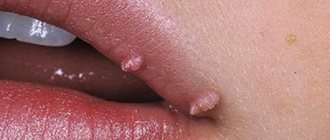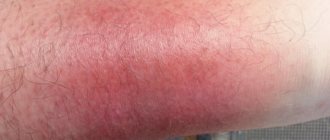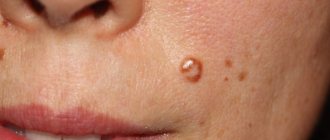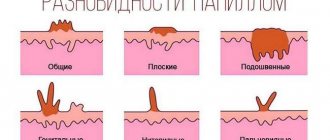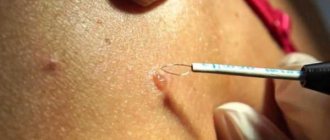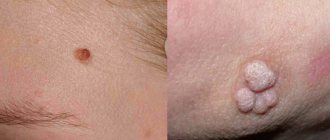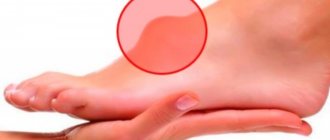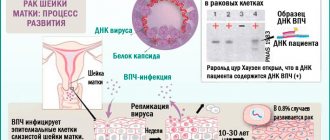The treatment regimen for papillomas includes removal of growths. In recent years, many effective methods for removing tumors have been developed: from surgical excision to removal with nitrogen or laser.
But any patient is interested in the question: is it painful to remove papillomas? Let's look at the main removal techniques in more detail.
Much depends on the size of the papilloma - if the growth is large, it may be a little painful. Before removal, local anesthesia is most often given.
Briefly about papillomas
Papillomas are viral benign neoplasms that appear on the skin and mucous membrane of human organs. The causative agent of the pathology is the human papillomavirus (HPV).
The safety of warts, unlike other skin growths, is characterized by the following factors :
- the disease occurs without intoxication;
- metabolic processes are not disrupted;
- formations do not provoke metastases;
- surrounding tissues are not destroyed;
- the size of the tumors increases slowly.
Of course, papillomas cannot be considered absolutely harmless. Very rarely, but such formations contribute to the deterioration of human health. For example, large skin growths can compress nerve bundles and blood vessels and obstruct air flow in the larynx.
Types of formations
Today, there are more than 170 types of papillomavirus, although all neoplasms are caused by one pathogen.
Papillomas are classified depending on the type, location and route of infection:
- Vulgar papillomas are most often localized on the sole, between the fingers, on their dorsum or palmar surface. They also often form around the chin and lips. Initially, a small spherical papule appears. After a certain period, it increases in size, becomes rough, and acquires a darker shade.
- Filiform papillomas - acrochords . Skin neoplasms are elongated or round in shape on a thin “leg”. This makes it possible to distinguish acrochords from other types of warts. Threaded papillomas do not appear in children; most often they are observed in people after 40 years of age. They usually form in the groin and armpits, on the eyelids and neck, and in females they can also appear under the mammary glands. Sometimes acrochords are formed in folded areas characterized by increased sweating.
- Condylomas acuminata have a papillary shape with a pointed end, flesh-colored or pink. Their structure is similar to acrochords - this is evidenced by the presence of a thin “leg”. Most often they appear when the virus enters the body through sexual contact; quite rarely, infection occurs through ordinary contact, so most often growths form in the perineum and genital area. Rarely, but they form on the cheeks, lips and mouth. Among all the varieties of warts, these are the most dangerous. Doctors do not exclude the possibility of their transformation into malignant ones. They cause discomfort in a person during sexual intercourse and when walking.
- Flat papillomas are very similar to ordinary moles, and their shade is close to the color of the skin. They can form in absolutely any area of the body: on the genitals, limbs, torso or face. In adolescents and children, flat papillomas most often form. They are also called juvenile warts. They disappear on their own with age, so there is no need to remove them immediately after they appear.
- Plantar warts . The lesions can often be found on the palms, toes and soles. Rarely, such warts appear in the back area. You don’t have to get rid of them; they will disappear on their own over time.
Laser surgery
Large tumors that have formed on the feet are subject to not only treatment, but also removal, as they interfere with a person’s walking and wearing shoes. You also don’t have to wait for the tumors that create discomfort when wearing clothes and moving to disappear on their own. For example, warts in the armpits, groin area, and on the back of the neck.
Removal of small tumors using a laser is carried out in just a few minutes. If the papilloma has managed to grow significantly and spread throughout the body, the operation may last a longer period. The first days after removal of the papilloma, redness of the skin will be observed, then it will go away.
Indications for tumor removal:
- the wart increases in size;
- pain periodically occurs in the area where the formation is located;
- papilloma has formed in an area of the body where it can be damaged by constant friction with clothes or shoes, during shaving, etc.
There are also special cases when it is impossible to remove skin lesions through surgery.
Contraindications to surgery to eliminate papillomas:
- have recently been tanned;
- the presence of diabetes mellitus, which is in the stage of decompensation;
- Herpes is present directly in the area where the growth forms;
- presence of colds;
- during pregnancy;
- for pathologies of an oncological nature.
Throughout the entire operation, the instrument does not come into direct contact with the patient’s skin. This eliminates the introduction of infectious bacteria. Already a week later, the wound heals on its own after removal of the formation. In this way you can get rid of papillomas located on any part of the human body. The only mandatory condition is availability for burning.
Laser removal of tumors is carried out in one session. If the situation is quite advanced, the operation can be carried out in several separate stages. At the patient's request, additional anesthesia can be used.
The essence of this technology for removing skin growths is to evaporate them with a laser beam. The depth of laser penetration is adjusted to the depth of penetration of the formation itself. After removal, a small hole remains at the site of the wart. The trace of the operation completely disappears after 2 weeks.
Progress of the procedure
Warts on the face, abdomen, genitals, legs and other parts of the body must be examined by a doctor before using the laser. Also, before destruction, a PCR analysis is carried out to identify the type of virus.
An analgesic ointment is applied to the papilloma that will be eliminated. If the patient is sensitive to pain, the formation is large or localized in a sensitive area, then the doctor injects an anesthetic.
The doctor adjusts the laser to remove papillomas to the required power and begins burning. Under the influence of rays, the formation slowly evaporates.
Types of laser radiation:
| Type of impact | Features of the procedure | pros | Minuses |
| Continuous | The radiation is supplied in a continuous stream. | The technique is used to eliminate different types of papillomas | During manipulation, the skin next to the growth heats up, which sometimes leads to a burn. |
| Pulse | The light is supplied intermittently (short flashes). But instantaneous radiation has great power, which is enough to destroy the wart. | The wound heals quickly, the skin surrounding the growth is not damaged. | There is a small chance of skin defects appearing at the excision site. |
Laser destruction of papillomas lasts up to 5 minutes. In one session you can get rid of one or even twenty growths. After therapy, the areas that were exposed to radiation are treated with an antimicrobial agent. Large formations are covered with bandages soaked in drugs that accelerate regeneration.
Recovery period
The recovery period after laser removal of a tumor is only a week. After this period, you can forget about visiting doctors. For quick wound healing, experts recommend additional use of ointments and creams.
Actions that cannot be performed after removal of papillomas:
- peel off the resulting crust yourself to avoid infection;
- it is necessary to completely prevent fluid from entering the wound during the first 3 days after removal of the tumor;
- you cannot visit swimming pools or take cold showers;
- sunbathing, visiting a solarium;
- use hygiene products with a high degree of acidity;
- mechanical impacts, injury must not be allowed;
- stick a plaster on the wound, it must breathe.
To prevent a lump, scar or scar from appearing on the surface of the skin after removal of the papilloma, the crust that has formed on the wound should fall off on its own after about 10 days. It is important not to touch it during this entire period. If the wound is accidentally touched, especially with wet hands, it must be treated immediately.
Which doctor should I contact?
Every third man and every second woman encountered various types of growths. At first glance, it seems that warts are completely harmless, but this is not so.
If papillomas are detected, you should not delay visiting a doctor: it is best to consult a dermatologist or dermavenerologist.
A dermatologist will conduct an initial examination and identify the location of candylomas or papillomas, as well as the characteristics of the growths. After the initial examination, the doctor will refer the patient to a surgeon or other specialist who will remove the tumors.
If papillomas appear in intimate places, a man needs to see a urologist, and a woman needs to see a gynecologist.
In addition to specialists, you may need to consult an immunologist. The most painful way to remove
Possible consequences
After laser removal of the growth, the skin in this area turns red, and the resulting wound becomes covered with a crust after some time. It is forbidden to remove it yourself, as the wound may open and become infected. You should also not wet it with water or treat it with alcohol-containing cosmetics. To shorten the healing period of this area of the skin, you can only use ointments recommended by your doctor.
Possible consequences after surgery:
- inflammation and suppuration of the wound due to improper care;
- weeping wounds;
- scar formation as a result of slow healing;
- the appearance of red spots after removal of papillomas is the consequences of ultraviolet irradiation.
If part of the crust comes off prematurely, it is not recommended to tear it off completely. You need to soak it in furatsilin or another antiseptic solution and carefully trim it. In order to prevent negative postoperative consequences, during the recovery period it is imperative to prevent wound suppuration and the penetration of infectious bacteria into it. To do this, you can only use those products recommended by your doctor. If you find any strange formations inside the wound, you must immediately go to the doctor.
Panavir for papillomas on the neck
Panavir is a herbal antiviral agent.
It contains nightshade polysaccharides.
This is the scientific name for potato.
The same thing you eat for lunch.
Panavir is used in different ways.
It is available in the form of a gel, rectal suppositories, vaginal suppositories and an intravenous solution.
According to the manufacturers, its mechanism of action is based on:
- stimulation of the formation of endogenous interferon
- increasing nonspecific resistance of the body
The list of indications for the use of potato extract includes a large number of viral diseases.
Including Panavir can be used for papillomavirus infection.
It is noted that it is used only as part of complex therapy.
This statement alone indicates that the drug is ineffective against HPV.
Because drugs that actually work can also be used in monotherapy.
They do not need any additional medications.
Complex therapy involves the use of a truly effective drug, and in addition to it - Panavir.
As a result, the effective drug will work, and you will not even notice that Panavir turned out to be useless.
Its effect on human papillomavirus infection is unlikely.
Papillomas on the neck are unlikely to fall off after using Panavir.
Benefits of a laser session
Getting rid of benign growths on the skin using laser equipment is the most effective and painless option. There are practically no contraindications for performing such an operation, and it can be used for papillomas formed on any part of the body accessible to the laser.
Main advantages of the technology:
- the penetration depth of the laser beam is fully controlled by a specialist;
- the laser during the operation does not damage healthy tissue located near the tumor;
- the operation takes place quite quickly, without complications;
- minimum rehabilitation period;
- the technique completely eliminates bleeding;
- sterility of the procedure;
- there is no risk of infection during wart removal;
- recurrence of formation is excluded;
- During one laser session, several papillomas can be removed at once.
The recovery period is quite short. The wound heals, and the crust disappears within a week, leaving no scars or scars, new living skin grows on the treated area. Laser therapy is even relevant for removing formations on rather delicate areas of the human body: lips, eyelids, corners of the eyes.
The disadvantages of surgery to remove benign tumors using a laser include the risk of deep burns if the technology for performing the procedure is violated, so therapy should be carried out exclusively by an experienced specialist.
Viferon ointment for papillomas on the neck
Viferon ointment contains recombinant human interferon.
Its dosage in 1 g of ointment is 40 thousand IU.
The drug has the following effects:
- immunomodulatory
- antiproliferative
- antiviral
Interferons are components of the human immune system.
They suppress viral replication.
There are no papillomas among the indications for use.
Viferon is mainly used for herpes infections.
However, it is also effective against papillomavirus.
There is scientific evidence that topical application of interferon suppresses HPV replication in the skin.
And yet, in most cases, Viferon does not achieve the main goals of therapy.
It is usually used in combination with other drugs, and not as an independent remedy.
Using Viferon, a person usually hopes:
- eliminate papilloma
- destroy papillomavirus
Perhaps if a person used Viferon at the stage of active growth of the formation, the ointment would give certain results.
For example, the papilloma would not grow or would be smaller.
But Viferon is usually used for “old” papillomas.
They have been on the skin for a long time, and they cannot be removed with antiviral drugs.
It is also impossible to destroy HPV in the body with the help of Viferon.
If only because it is a local drug.
It only works on a limited area of skin.
